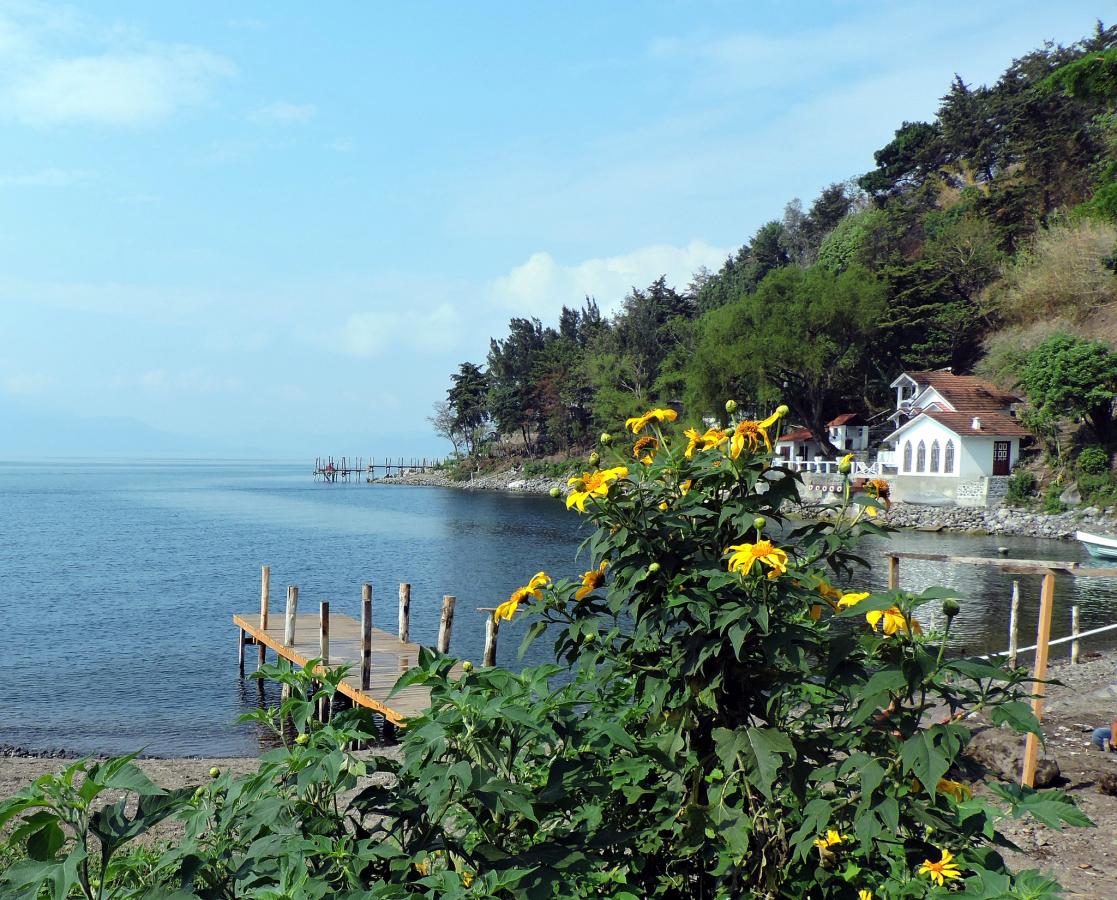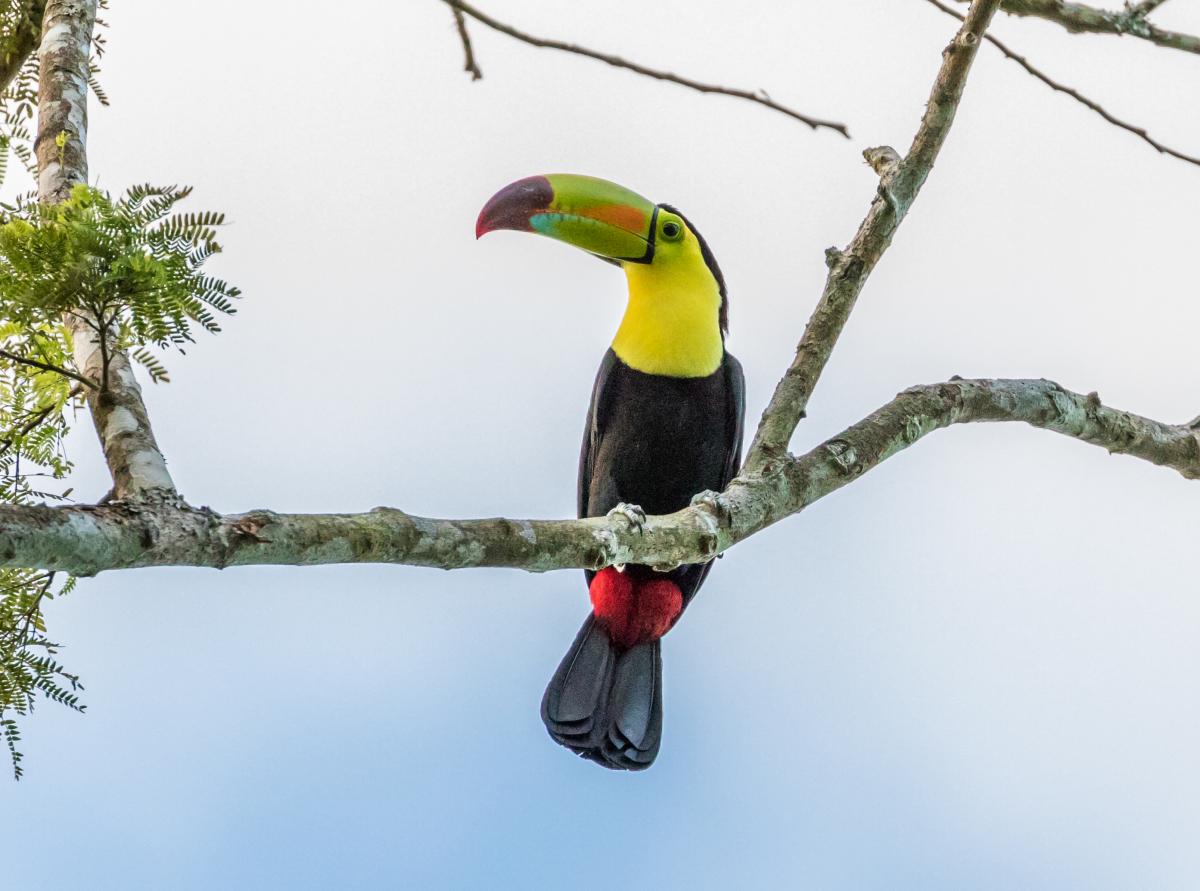Dennis, KT8X will be active as TG4/KT8X from Guatemala, 16 - 23 August 2025.
He will operate on 40 - 6m, CW, FT8.
Recent DX Spots TG4/KT8X
QSL via LOTW only.
Guatemala – the cradle of Mayan culture
The Republic of Guatemala is the largest and most populous country in Central America, bordering Belize, El Salvador, Mexico, and Honduras. Guatemala's eastern and southern borders are washed by the Pacific Ocean and the Caribbean Sea. The country is famous for its rich Mayan heritage, endless tropical forests, and majestic volcanoes. This truly colorful country is equally well suited for active tourism and a leisurely family vacation on the sea or ocean coast. Guatemala is a place whose uniqueness is guaranteed to leave no one indifferent. Mystical festivals, shamanic rituals, authentic Mayan settlements—everything here is designed for a complete immersion in Indian culture.
 Santa Cruz, Guatemala. Author - asterisktom.
Santa Cruz, Guatemala. Author - asterisktom.
Nature and climate
Just over half of Guatemala is covered by the Cordillera mountain range, namely the volcanic highlands of the Sierra Madre. It is in this part of the country that the magnificent Tahuimulco volcano is located, the highest point not only in Guatemala, but in all of Central America.
Guatemala is covered by more than three dozen volcanoes, three of which are active and pose a real threat. Guatemala has a tropical climate, but due to the mountainous terrain, weather conditions can vary significantly in different parts of the country. The rainy season lasts from May to October and is accompanied by large-scale natural disasters. The warmest and most favorable weather for recreation is from February to May, which is when the country sees the largest influx of tourists.
History of Guatemala
Indian tribes have inhabited this area since time immemorial. It is known that as early as the 1st millennium BC, there were numerous Mayan settlements here, mainly in the mountainous areas. After the peak of Mayan culture, which occurred between the 2nd and 9th centuries AD, a period of decline began, when the K'iche' tribes, who came from Tabasco, settled in this area. Having founded their state, the K'iche' fought bloody wars for dominance over the local lands.
In 1523, the first Europeans appeared on the territory of modern Guatemala in the form of Spanish conquerors led by Pedro de Alvarado. The K'iche' Indians put up a strong resistance to the conquistadors, but after only two years, the indigenous population was completely subjugated by the Spanish.
In their new colony, the Spanish engaged in agriculture and gold mining. Compared to neighboring territories, black slaves were rarely brought here, and those who were brought quickly assimilated with the local population.
 Guatemala. Author - Rudy Cano.
Guatemala. Author - Rudy Cano.
Independence and modern times
With the struggle for independence among Spanish colonies in full swing, on September 15, 1821, Guatemala became a sovereign state, immediately joining the Mexican Empire, which it left two years later. Together with a number of other Central American countries, Guatemala formed a federal state, which also soon collapsed.
In the first half of the 20th century, the United States and Germany became Guatemala's most important economic partners. The country's government granted the American company United Fruit a portion of its fertile plantations for growing bananas. Cooperation with the Americans brought tangible benefits to the country in the form of a well-developed transport infrastructure. Other plantations were occupied by Germans, who established large-scale coffee production, which still accounts for a significant share of the country's exports.
Guatemala – capital and largest metropolis
The administrative, cultural, and political center of Guatemala bears the same name as the country. Probably to avoid confusion, the townspeople call their capital “Guat” for short.
During the time of the Spanish conquistadors, the city of Santiago stood on the site of Guatemala City, but it was completely destroyed by an awakened volcano less than two decades later. The new city, Antigua, rebuilt by the Spanish on the same site, was also destroyed by natural forces, this time by an earthquake. The city of Guatemala, the third attempt by the Spanish to rebuild the capital, also suffered partial destruction as a result of earthquakes in the 20th century. Unfortunately, due to natural disasters in the capital, almost no historical monuments have survived.
Guatemala embodies the unity of modern traditions and Latin American flavor. The capital can confidently be called a city of contrasts, given how slums coexist with stately mansions and old Catholic churches border modern skyscrapers.
Guatemala City has no access to the sea, but it is nevertheless an attractive destination for tourists. In particular, the city is famous for its unique selection of textiles—local shops sell items made by factories in different parts of the country. If you are interested in the history of the Maya Indians and want to delve deeper into the subject, the Guatemalan capital is the place to buy unique books in Spanish. Be sure to visit the historic center of the metropolis, where you can admire architectural monuments that have survived natural disasters.
 Toucan, Tikal, Guatemala. Author - E.K.111.
Toucan, Tikal, Guatemala. Author - E.K.111.
National cuisine of Guatemala
The country's culinary traditions have much in common with Mexican cuisine, which is also based on the use of rice, meat, and legumes. Most meat dishes Guatemalans prepare on the grill, serve as sausages, or stew in special clay pots. A distinctive feature of local dishes is the abundance of different spices, herbs, and fresh greens.
For dessert, locals prefer burritos with sweet fillings and ice cream. In some regions, you can still taste authentic Indian cuisine.
While in Guatemala, be sure to try the original rum cocktail Rompop with egg and milk. Local coffee is especially popular here, and its aroma is unforgettable.
Attractions Guatemala
Indigenous culture and unique nature are two reasons why tourists pay so much attention to this country. There are 11 large national reserves and parks in Guatemala where you can admire rare species of flora and fauna. In addition to picturesque and dangerous volcanoes, the country is home to the famous Lake Atitlán, the deepest lake in Central America, around which there are still settlements of indigenous people.
Tikal National Park, opened to tourists in 1955, is considered the largest Mayan city. Walking through the park, you can see the unique Indian architecture in detail.
A walk through the archaeological park of Quiriguá in the southeastern part of the country will be no less fascinating. The large area contains key monuments of Indian writing, including stone calendars and monuments with historical chronicles.
El Mirador is the largest Mayan city of the pre-classical period. Despite being surrounded by impenetrable forests, there are many who wish to admire the famous ancient pyramids.

